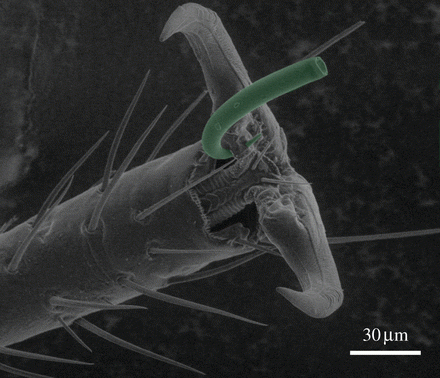Bedbugs No Match For Kidney Bean Leaves; Eastern European Folk Remedy Proves Effective

A bedbug infestation is a pain in more ways than one. To even have a hope of taking your domicile back from the invaders, you have to use costly measures like freezing, heating, or professional pest control. Many over the counter methods, like sprays or bug bombs, have been proven ineffective.
But maybe there’s a better way. For a more effective, environmentally friendly way to stop the bloodsuckers, scientists are taking a leaf out of an Eastern European housewife’s book – literally!
In the Balkans, an old remedy for bedbug infestations is to strew kidney bean leaves on the floor around the bed. Come morning, one would find bedbugs trapped on the leaves, which were then burned. Now, in a new paper published in the Journal of the Royal Society Interface, researchers from the University of California at Irvine and the University of Kentucky have found out that there’s some scientific merit to this old wives’ tale.
The scientists filmed bedbugs walking across kidney bean leaves, and also used electron microscopes to survey the damage up close. Those leaves, it turns out, are a minefield for bed bugs, with sharp, hooked hairs standing poised to pierce them.
The leaf hairs, or trichomes, are almost perfectly suited to waylay bedbugs, positioned at just the right height and orientation to stab the bugs where they’re most vulnerable: underneath the bug’s claws and in between the segments of its body, where there's a thinner membrane instead of strong exoskeletal armor. You can see the damage in this picture here:

“Struggling, trapped bed bugs are impaled by trichomes on several legs and are unable to free themselves,” the authors wrote.
The trichomes were packed so dense that a bedbug was usually snagged after about six steps on the leaf, the researchers found. Within seconds, a bug was trapped, and its subsequent struggles just brought more pain, as additional sharp hairs found their mark.
Bean leaves might be a good pest control tactic, but only a temporary one – they tend to dry out quickly. (If you want to try your hand at this remedy, you might have to turn to a local bean farmer or, failing that, grow your own.)
The researchers tried to make synthetic bedbug traps modeled after the leaf surfaces, but the man-made stuff didn’t work quite as well as the real thing. In their paper, the researchers hypothesized that there's some bending or twisting behavior in the trichome stalks that helps guide the points of the hairs to their target.
Perfecting a bedbug trap that mimics the bug-stabbing hairs of the kidney bean plant would be a real boon, given that many bedbugs out in the wild are resistant to common pesticides.
"Nature is a hard act to follow, but the benefits could be enormous," author and UK researcher Michael Potter said in a statement. "Imagine if every bedbug inadvertently brought into a dwelling was captured before it had a chance to bite and multiply."
SOURCE: Szyndler et al. “Entrapment of bed bugs by leaf trichomes inspires microfabrication of biomimetic surfaces.” Journal of the Royal Society Interface 10: 20130174, June 2013.
© Copyright IBTimes 2024. All rights reserved.





















